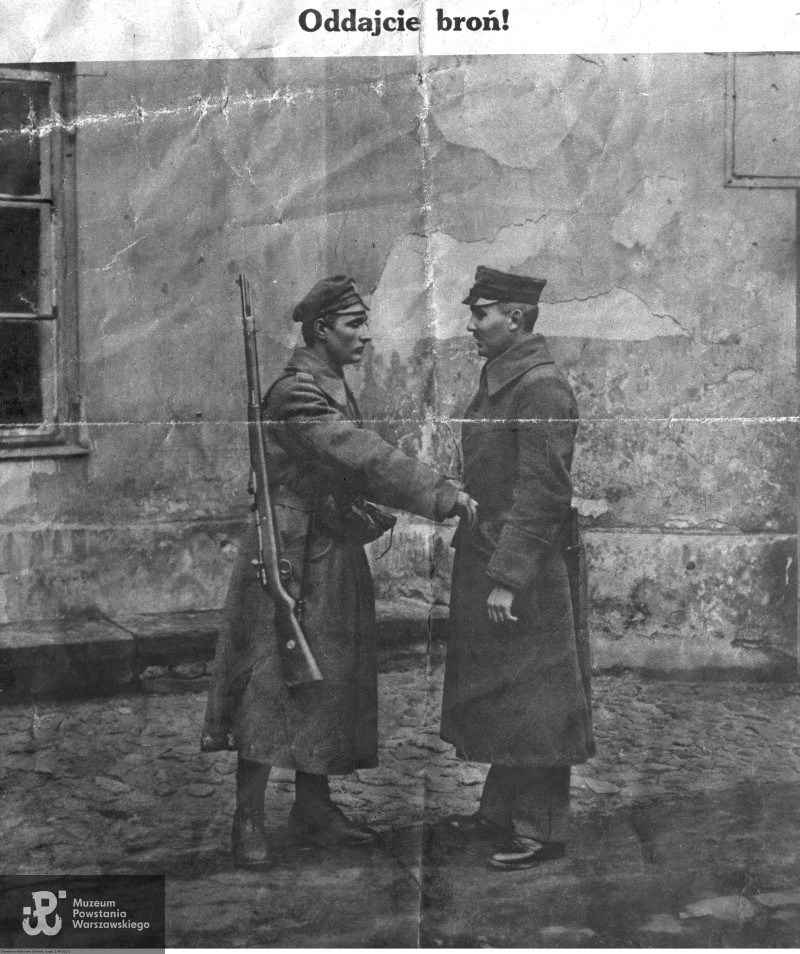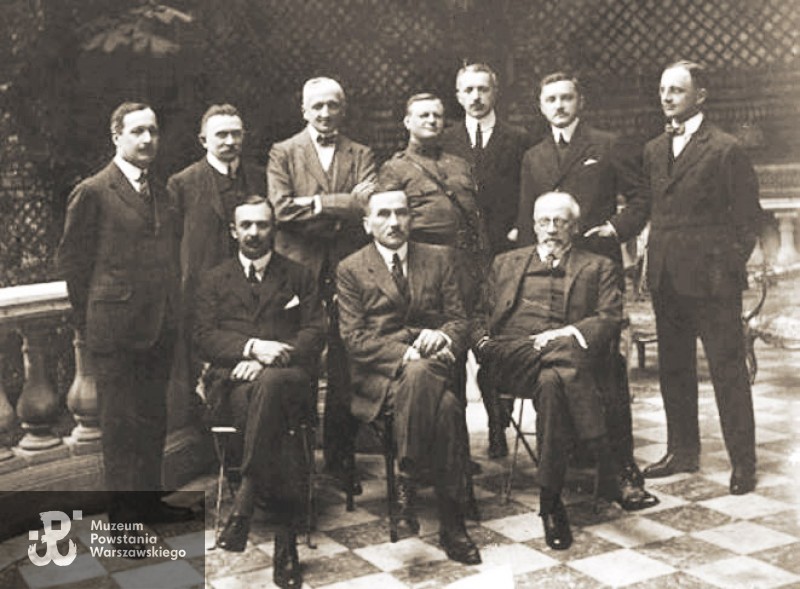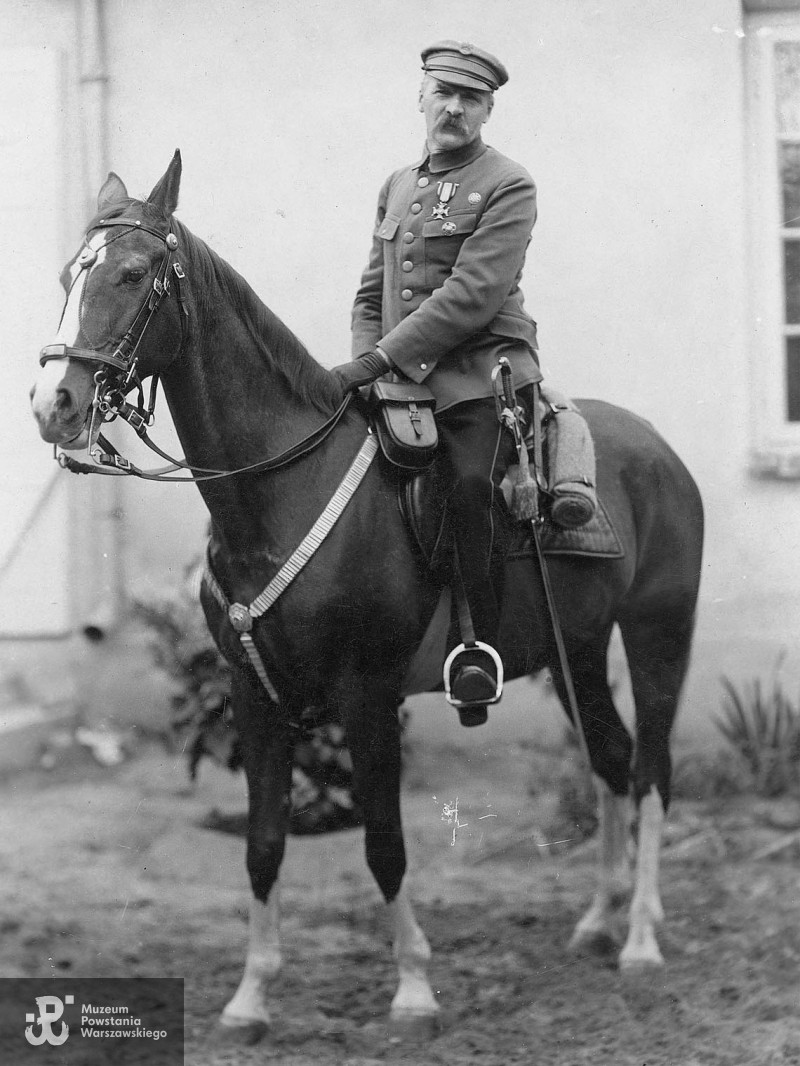



It was almost the end of July 1944. The higher command of the Home Army (Armia Krajowa) and the Polish Underground State were busy considering pros and cons to launch the battle for Warsaw, later known as the Warsaw Rising. Then, they discussed in depth political and military issues and even today these issues are being analyzed and questioned by historians, journalists and all those for whom the history of the Warsaw Rising is dear. However, these discussions rarely mention the aspect that had an impact on those who took the decision to start the Rising namely, their WWI experience.
In 1944 the leaders of the Polish Resistance were prisoners of ‘the clock of history’. This clock would stop only once to show the right moment to take the key decision for Poland. The same situation happened in the last months of WWI. The events that happened then in Europe came as a surprise and even a year before, no one could have had predicted them.
It turned out that in 1917 two revolutions swept through Russia. Firstly, the tzar’s was overthrown, then in November the bolsheviks came into power. Soon they withdrew Russia from WWI signing a cease-fire with Germans. In this way, suddenly, the war came to the end on the eastern front. However, at the same time, American troops had already landed in Europe. That was the Entente’s advantage on the western front. In November 1918 Germany was struck by a political revolt orchestrated by the opponents of the war. The Emperor abdicated and the German state surrendered. Germans asked for the armistice even though not a single enemy soldier crossed their border.
What happened in 1918 at the political chessboard in Europe, totally changed the situation for Poles. Although the Entante was the winner, Russia (the state that was against independent Poland) was no longer its member. When the German Empire saw its final days, members of the Polish Military Organisation who remained in the underground so far, rushed to the streets and disarmed German soldiers.

Disarming German soldiers in Warsaw, 1918. Photo: NAC
At the same time different centres of state’s government were being created. In Lublin even a temporary Polish government was established that was ready to be transfered to Warsaw as soon as possible. It seemed then that Roman Dmowski, who was the head of the Polish National Committee (KNP) in Paris, was the most significant political figure.

Members of the Polish National Committee, Paris 1918. Roman Dwowski sits in the middle. Photo: National Library Archive
Dmowski kept the side of the winning Entente from the very first days of the war. Firstly, he stayed in Russia, then he moved to Great Britain and France. The states that belonged to the victorious Entente recognized the Polish National Committee to be legitimate Polish government in exile. Therefore, the Committee was a member of the coalition that won WWI. Nonetheless, it was Józef Piłsudski who took over power when Poland was brought back to the map of Europe in 1918. Not only was he a member of the opposition to Dmowski’s politics but also he carried the burden of someone who was politically active and cooperated with the defeated countries as he fought along the Austro-Hungarian Empire and Germany till July 1917. Nevertheless, in November and December 1918 it was him who played the leading role as he simply was at the right place and time where he needed to be. ‘Fait accompli’ strategy worked perfect for him as it was more important who was in Warsaw, instead of Lublin or Paris.

Józef Piłsudski. Photo: National Library Archive
The times of WWII differred totally from WWI and the Polish underground leaders were aware of this. However, naturally one could not escape the feeling that the situation was repeating itself. In June 1944, just as in 1918, the Allies supported by the US began their offensive in Western Europe. It was clear that the fall of the Third Reich was just a matter of time. In July, the newspapers were filled with the story of Wolf’s Lair where Hitler was almost killed by his staff members. The assassination attempt failed and the plotters were executed. However, these events gave hope that the internal unity among Germans was finally broken. There were some voices that the Third Reich may surrender even before suffering a final defeat.
Also in July 1944 new political forces, that were trying to take control over country, were being formed. As in 1918, in 1944 a new government was established, namely the Polish Committee of National Liberation (PKWN). Obviously, these two governments had little in common. The one in 1918 was composed of the parties of the Left who aimed at creating independent Poland. The other that was formed in 1944 was composed of communists and pro-Soviet Left activists who were in the hands of Moscow. PKWN only waited to take control over Warsaw.
In this situation it was evident that those who have Warsaw in their hands would rule post-war Poland. Those who control the capital city could not be disregarded when new order after WW2 would be introduced. Thus, in 1944 it was believed we could not miss the moment to start fighting for Warsaw. It turned out that history does not always repeat itself...
You are kindly invited to read more about the situation before the Warsaw Rising broke out in the book „Chcieliśmy być wolni. Powstanie Warszawskie 1944” published by WAB and the Warsaw Rising Museum in 2022.
Author: Andrzej Zawistowski, PhD